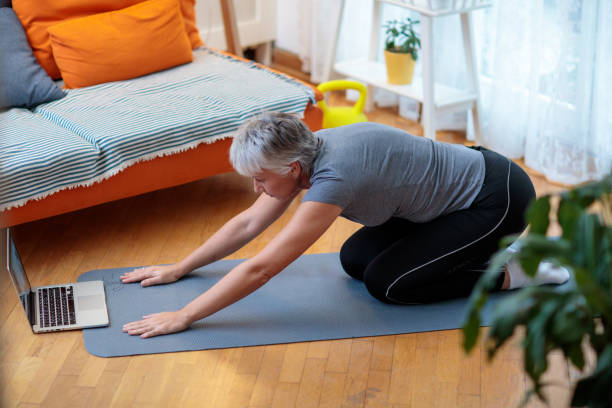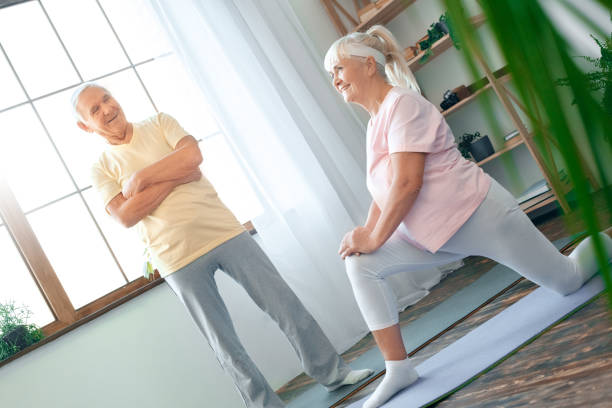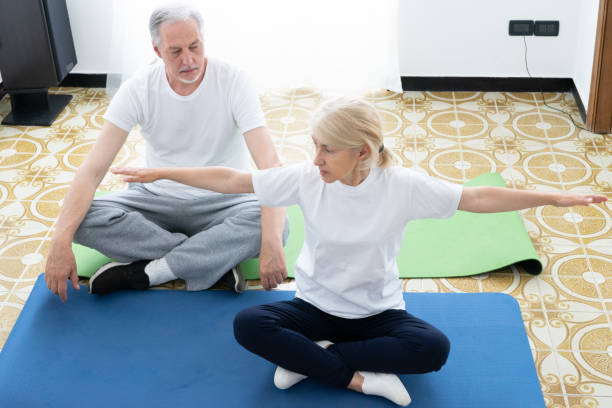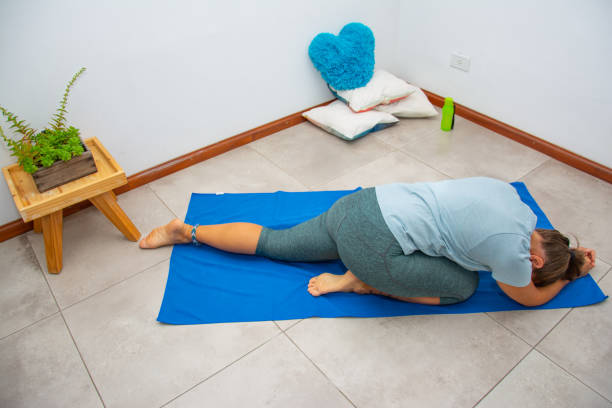Alternative Treatments
Is Yoga Good For Osteoarthritis
Yoga has gained popularity as a method of exercise and relaxation in recent years. It is a low-impact activity that can be tailored to individuals of different ages and fitness levels. But is yoga beneficial for osteoarthritis?
Osteoarthritis is a prevalent disease that affects millions of people globally. It is a degenerative joint disease characterized by pain, stiffness, and edema. While there is no cure for osteoarthritis, there are numerous therapies available to assist manage its symptoms. Exercise is one of the most effective treatments for osteoarthritis, and yoga has been proved to be particularly useful.
According to research, yoga can help relieve pain and stiffness in persons with osteoarthritis. It can also help with flexibility, balance, and range of motion in the affected joints. Yoga can also help relieve stress and enhance overall well-being, which is especially good for persons who have chronic ailments such as osteoarthritis. However, not all styles of yoga are appropriate for people with osteoarthritis, and it is critical to contact with a healthcare practitioner before beginning any new exercise regimen.

Benefits of Yoga for Osteoarthritis
Yoga has been proved to provide several benefits to those with osteoarthritis. In this part, we’ll look at some of the most significant benefits of yoga for osteoarthritis patients.
Improvement in Physical Function
One of the key benefits of yoga for osteoarthritis is improved physical function. A study published in the Journal of Rheumatology demonstrated that yoga dramatically improved physical function in those with knee osteoarthritis. This is because yoga improves mobility, range of motion, and muscle strength, all of which are necessary for proper physical function.
Pain Management and Relief
Another important advantage of yoga for osteoarthritis is pain control and alleviation. A study published in the Journal of Pain Research discovered that yoga was beneficial in lowering joint pain and stiffness in those with knee osteoarthritis. This is because yoga promotes flexibility and range of motion, which can assist to alleviate joint pain and stiffness.
Enhanced Flexibility and Range of Motion
Yoga is also good for improving flexibility and range of motion in those with osteoarthritis. According to a study published in the Journal of Alternative and Complementary Medicine, yoga can enhance flexibility and range of motion in people with knee osteoarthritis. This is because yoga poses involve muscular stretching and strengthening, both of which can assist to develop flexibility and range of movement.
Finally, yoga can help people with osteoarthritis improve their physical function, manage and relieve pain, and increase their flexibility and range of motion. Including yoga in your physical activity program can help manage osteoarthritis symptoms and improve overall physical function.

Yoga Poses Suitable for Osteoarthritis
Yoga is a great low-impact activity for reducing osteoarthritis symptoms. However, it is critical to select the appropriate positions and modifications to ensure safety and comfort. In this section, we’ll go over some yoga positions that are appropriate for osteoarthritis, as well as adjustments and props that can help make the practice more accessible.
Chair and Gentle Yoga Options
Chair yoga and gentle yoga can be beneficial to people suffering from osteoarthritis. These are low-impact exercises that may be performed while sitting or standing with the help of a chair. Chair yoga poses include sitting spinal twist, mountain pose, and tree pose. These poses enhance flexibility, balance, and strength, all of which can benefit those with osteoarthritis.
Modifications and Props for Safety
Yoga positions can be modified and propped to make them safer and more pleasant for people who have osteoarthritis. Blocks and straps, for example, can be utilized to support the body when performing tree pose or sitting spinal twist. These props can help to lessen the risk of injury while also making the postures more accessible to anyone with restricted mobility or flexibility.
It’s also crucial to listen to your body and adjust poses as needed. For example, if a stance causes pain or discomfort, it is critical to back off or change the pose. Remember that yoga is supposed to be relaxing and joyful. Those suffering from osteoarthritis can safely and pleasantly experience the numerous advantages of yoga by selecting the appropriate poses and modifications.

Considerations Before Starting Yoga
When practicing yoga for osteoarthritis, some aspects must be considered to provide a safe and beneficial experience. In this section, we’ll go over two crucial considerations: talking with healthcare specialists and selecting the correct yoga instructor and style.
Consulting with Healthcare Professionals
Before beginning yoga, contact with a medical expert, such as a doctor or physical therapist. They can evaluate your condition and make recommendations on which yoga poses and activities are beneficial to you and which should be avoided. They can also advise on any adjustments or alterations that may be required to meet your specific needs.
Before beginning yoga, you should advise your healthcare professional of any pre-existing medical issues or injuries. They may propose specific yoga techniques that are more suited to your illness or advise against poses that may aggravate your symptoms.
Choosing the Right Yoga Instructor and Style
Choosing the correct yoga instructor and style is critical to a safe and effective practice. Look for a qualified and certified yoga instructor who has worked with people who have osteoarthritis. They should be knowledgeable about any adjustments or adaptations that may be required to meet your specific needs.
There are various yoga styles to choose from. Iyengar yoga, for example, emphasizes alignment and use props to support the body during poses. Anusara yoga focuses on heart-opening positions and encourages students to progress at their own speed. Kripalu yoga is a gentle, meditative practice that promotes self-awareness and acceptance. Viniyoga is a therapeutic technique that focuses on breath and movement harmony.
Hatha yoga is a popular technique that is frequently advised for those who have osteoarthritis. It is a moderate practice that emphasizes breathing and basic poses, making it suitable for people of various fitness levels and abilities.
Finally, before beginning a yoga practice for osteoarthritis, it is critical to speak with healthcare professionals as well as select the appropriate yoga instructor and style. By considering these aspects, we can assure a safe and effective approach that can help relieve symptoms and enhance overall well-being.

Integrating Yoga into Lifestyle for Osteoarthritis
Living with osteoarthritis (OA) can be difficult, but including yoga into our daily routine can help manage the symptoms and enhance our quality of life. In this section, we’ll talk about how to develop a long-term yoga habit, as well as complementary therapies and lifestyle adjustments that can help you get more out of yoga.
Creating a Sustainable Yoga Routine
When beginning a yoga program, it is vital to start slowly and gradually increase the intensity and duration of the practice. We might begin with easy yoga poses aimed at stretching and strengthening the muscles surrounding the afflicted joint. As we get more familiar with the practice, we can progress to increasingly difficult poses.
It is also critical to listen to our bodies and prevent overexertion, which can exacerbate the symptoms of OA. We should alter the poses to meet our own needs and avoid any moves that create pain or discomfort. A trained yoga instructor can assist us in creating a personalized yoga regimen that addresses our individual needs.
Incorporating yoga into our daily routine can be difficult, but we can begin by practicing for a few minutes each day and gradually increase the time. We can also include yoga into our daily lives by stretching while watching TV or performing yoga poses during our lunch break.
Complementary Therapies and Lifestyle Changes
Yoga is one of the complementary therapies and lifestyle adjustments that can help control OA symptoms. Acupuncture, massage, and physical therapy are among the other treatments available. Lifestyle modifications such as a good diet, regular exercise, and stress management skills can all help to boost the advantages of yoga.
A nutritious diet helps lower inflammation and enhance joint health. A well-balanced diet should consist of fruits, vegetables, entire grains, and lean protein. We should also avoid processed foods, sugary beverages, and saturated and trans fat-rich foods.
Regular exercise can increase joint mobility and relieve discomfort. Walking, swimming, and cycling are all low-impact exercises that we may add into our daily routine. We should also avoid high-impact activities like sprinting and jumping, which can exacerbate the symptoms of OA.
Meditation and deep breathing are two stress reduction practices that can help reduce tension and anxiety, both of which can exacerbate OA symptoms. We can use these strategies into our yoga program or throughout the day.
Finally, incorporating yoga into our daily routine can aid in the management of OA symptoms and enhance our overall health. We may improve the benefits of yoga and live a healthier, happier life by developing a long-term yoga regimen that includes complementary therapies and lifestyle adjustments.
Conclusion
One of the standout advantages of incorporating yoga into my routine has been its gentle approach to joint mobility. Yoga’s low-impact nature, combined with its focus on fluid movements and gradual stretching, has provided a therapeutic avenue to enhance flexibility and ease the stiffness associated with osteoarthritis. Engaging in these purposeful postures has become a source of relief, promoting better joint function and reducing discomfort.
Beyond the physical aspects, the mental and emotional dimensions of yoga have played a profound role in my osteoarthritis journey. The meditative elements and breathwork inherent in yoga foster a serene mindset, helping me navigate the challenges of living with osteoarthritis with a calmer perspective. The mind-body connection cultivated through yoga has proven instrumental in managing stress, a factor known to exacerbate arthritis symptoms.
The adaptability of yoga practices has been a boon, allowing me to tailor my sessions to accommodate the unique needs and limitations posed by osteoarthritis. Whether it’s choosing gentle poses, modifying sequences, or incorporating props, yoga empowers me to customize my practice, ensuring a safe and comfortable experience.
Journey of self discovery


